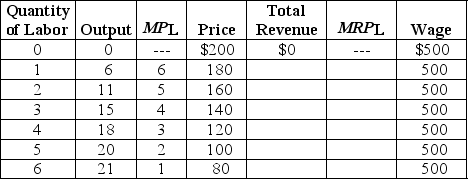Table 17-4

Table 17-4 lists data for the production of Apple iPods. Apple is assumed to be a price maker, so to increase its sales of iPods the firm must lower its price. MPL and MRPL refer to the marginal product of labor and the marginal revenue product of labor, respectively.
-Refer to Table 17-4.What are the price and quantity of workers that result in the maximum amount of revenue Apple would earn from selling iPods?
Definitions:
Saltatory Conduction
The process by which nerve impulses jump between the nodes of Ranvier in myelinated neurons, speeding up signal transmission.
Node of Ranvier
Gaps in the myelin sheath of nerve fibers where the axonal membrane is exposed to the extracellular space, facilitating rapid signal transmission.
Action Potential
A rapid rise and subsequent fall in membrane potential across a cellular membrane, crucial for the propagation of electrical signals in nerve and muscle cells.
Local Potentials
Electrical changes in neurons that are confined to a small region, serving as the initial response to stimuli, potentially leading to action potentials.
Q21: According to a New York Times article,
Q49: Refer to Figure 17-1.If Dale can sell
Q65: Refer to Table 17-4.What are the price
Q68: An individual's labor supply curve shows<br>A)the maximum
Q126: Suppose an industry is made up of
Q152: Refer to Table 17-5.Oil Can Harry's, a
Q154: In 2014, which type of tax raised
Q188: The law of one price<br>A)states that consumers
Q272: A successful compensation scheme<br>A)must pay workers with
Q272: Market power refers to<br>A)the ability of consumers